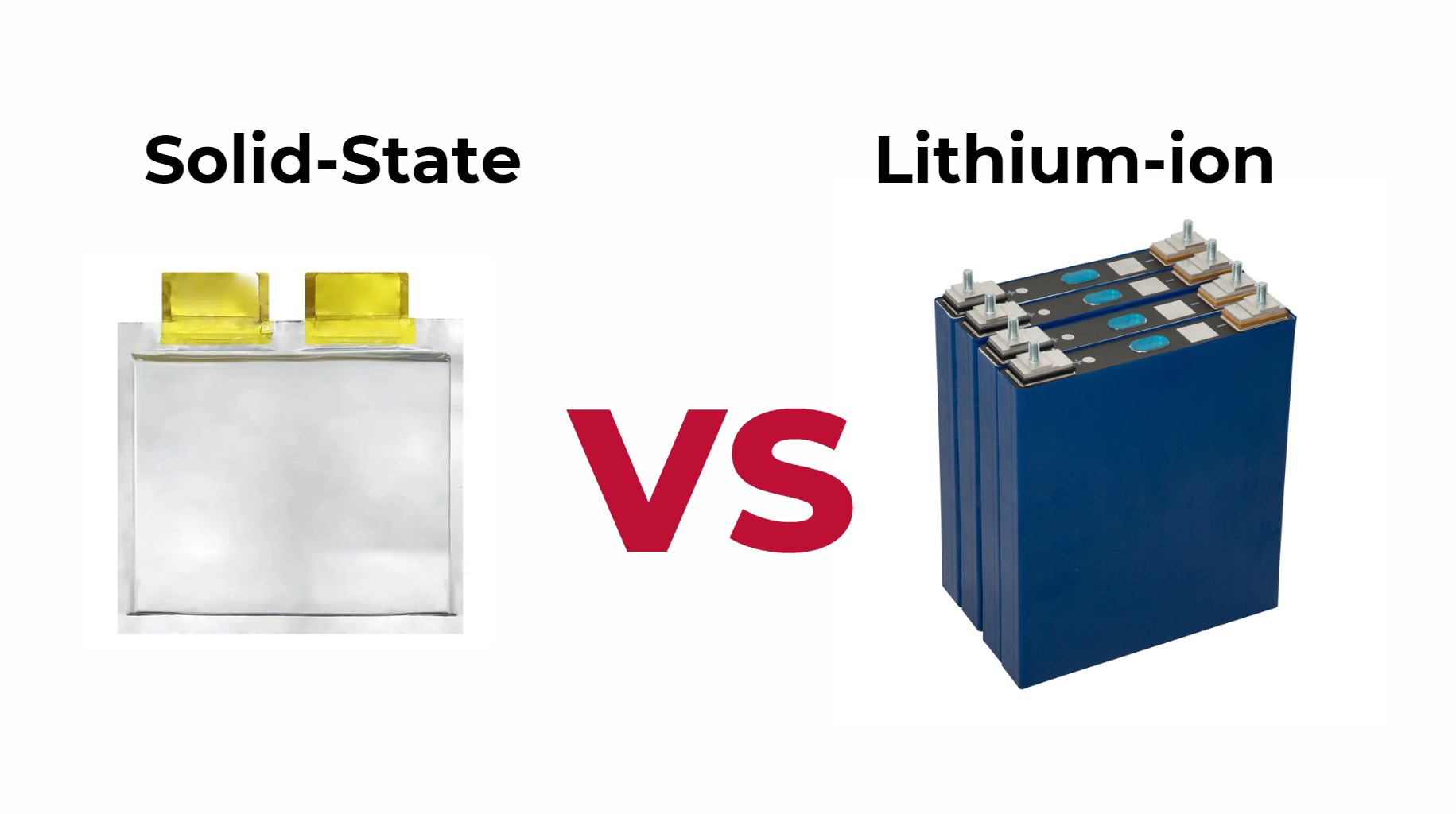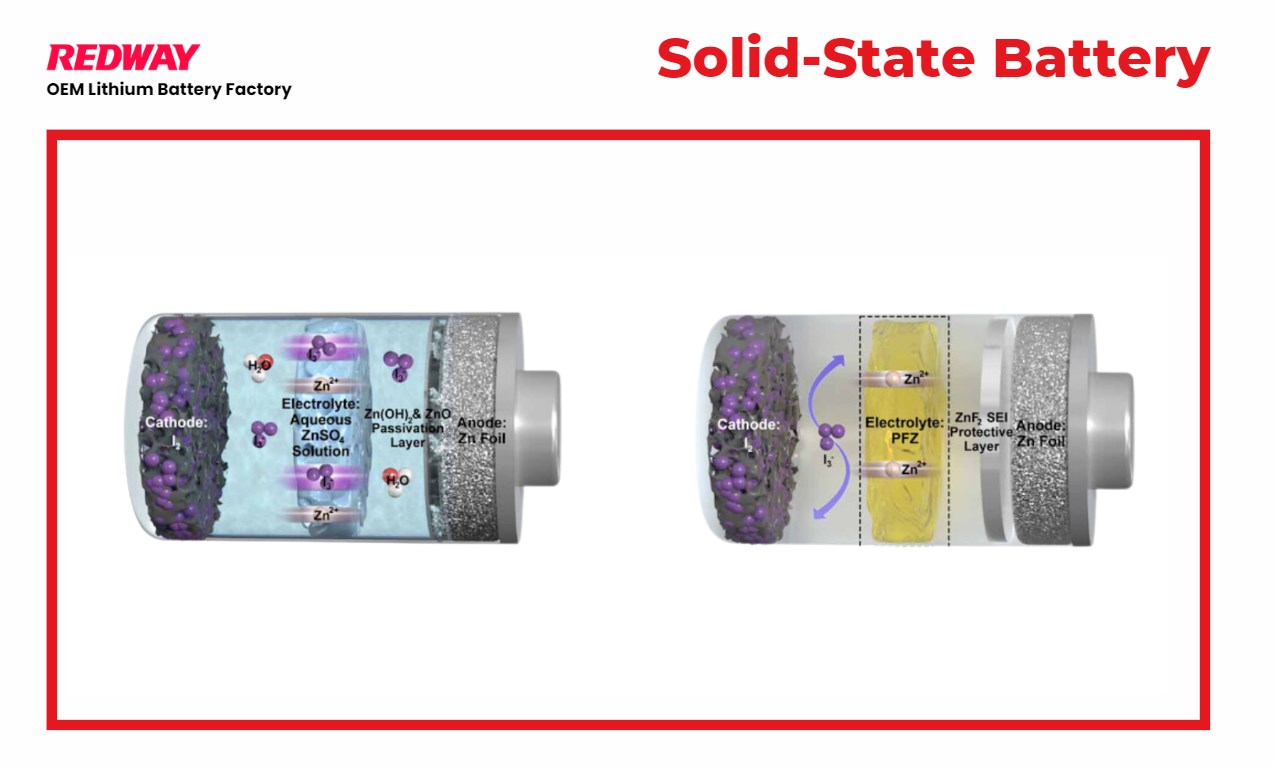As advancements in battery technology continue, solid-state batteries (SSBs) and lithium-ion batteries (LIBs) stand out as two leading contenders, each with its own set of strengths and challenges. This article provides a detailed comparison of these technologies, focusing on key differences, current research and development, and their implications for future applications.
Key Differences
Electrolyte Composition
- Lithium-Ion Batteries: LIBs use liquid electrolytes, typically organic solvents, to facilitate ion transport between the anode and cathode. While effective, these liquid electrolytes are flammable and pose safety risks, particularly in the event of a malfunction or damage.
- Solid-State Batteries: SSBs utilize solid electrolytes, which can be made from ceramics, polymers, or other materials. This solid structure enhances safety by eliminating the risk of leakage and combustion associated with liquid electrolytes.
Energy Density
- Lithium-Ion Batteries: LIBs generally offer an energy density of around 250 Wh/kg. This limits the range and efficiency of applications like electric vehicles (EVs) and portable electronics.
- Solid-State Batteries: SSBs can achieve significantly higher energy densities, potentially ranging from 250 to 900 Wh/kg. This allows for longer driving ranges and more compact battery designs, making them particularly attractive for EVs and high-performance electronics.
Safety
- Lithium-Ion Batteries: Safety concerns with LIBs arise from the flammable liquid electrolyte, which can lead to thermal runaway and fires under certain conditions.
- Solid-State Batteries: SSBs offer enhanced safety features due to the absence of flammable materials. They can tolerate higher temperatures and have a lower risk of thermal runaway, making them inherently safer.
Charging Speed
- Lithium-Ion Batteries: LIBs typically require 20 minutes to several hours to charge, depending on the battery size and charging technology.
- Solid-State Batteries: SSBs are capable of achieving 80% charge in as little as 10 to 15 minutes, aligning more closely with traditional refueling times for internal combustion engine vehicles.
Cycle Life
- Lithium-Ion Batteries: LIBs generally experience noticeable degradation after about 1,000 charge-discharge cycles.
- Solid-State Batteries: SSBs are expected to last significantly longer, with degradation becoming noticeable only after approximately 5,000 cycles. This leads to lower replacement and maintenance costs over time.
Current Research and Development
Advancements
- Material Innovations: Research is focused on developing new solid electrolyte materials that enhance ionic conductivity and stability. Composite electrolytes that combine different materials are being explored to optimize performance.
- Interface Engineering: Efforts are underway to improve the interface between solid electrolytes and electrodes to reduce resistance and enhance battery efficiency. This includes using advanced coatings and other techniques to stabilize these interfaces.
- Manufacturing Techniques: Scaling up production processes for SSBs is a significant focus, aiming to reduce costs and improve manufacturing efficiency. Current production methods are complex and expensive compared to established lithium-ion battery manufacturing.
Challenges
- Cost: SSBs are currently more expensive to produce than LIBs. Achieving cost parity is crucial for widespread adoption in consumer markets.
- Material Scarcity: The reliance on specific materials for SSBs, such as lithium, raises concerns about sustainability and supply chain stability, similar to the issues faced by lithium-ion batteries.
- Performance at Low Temperatures: SSBs have shown variable performance in cold conditions, which needs to be addressed for them to be viable in all climates.
Conclusion
Solid-state batteries present a promising alternative to lithium-ion batteries, offering enhanced safety, higher energy density, faster charging, and longer lifespan. However, challenges related to cost, manufacturing, and material performance must be addressed before SSBs can replace LIBs in mainstream applications, particularly in electric vehicles. Ongoing research and innovation are crucial to overcoming these hurdles and unlocking the full potential of solid-state battery technology.




